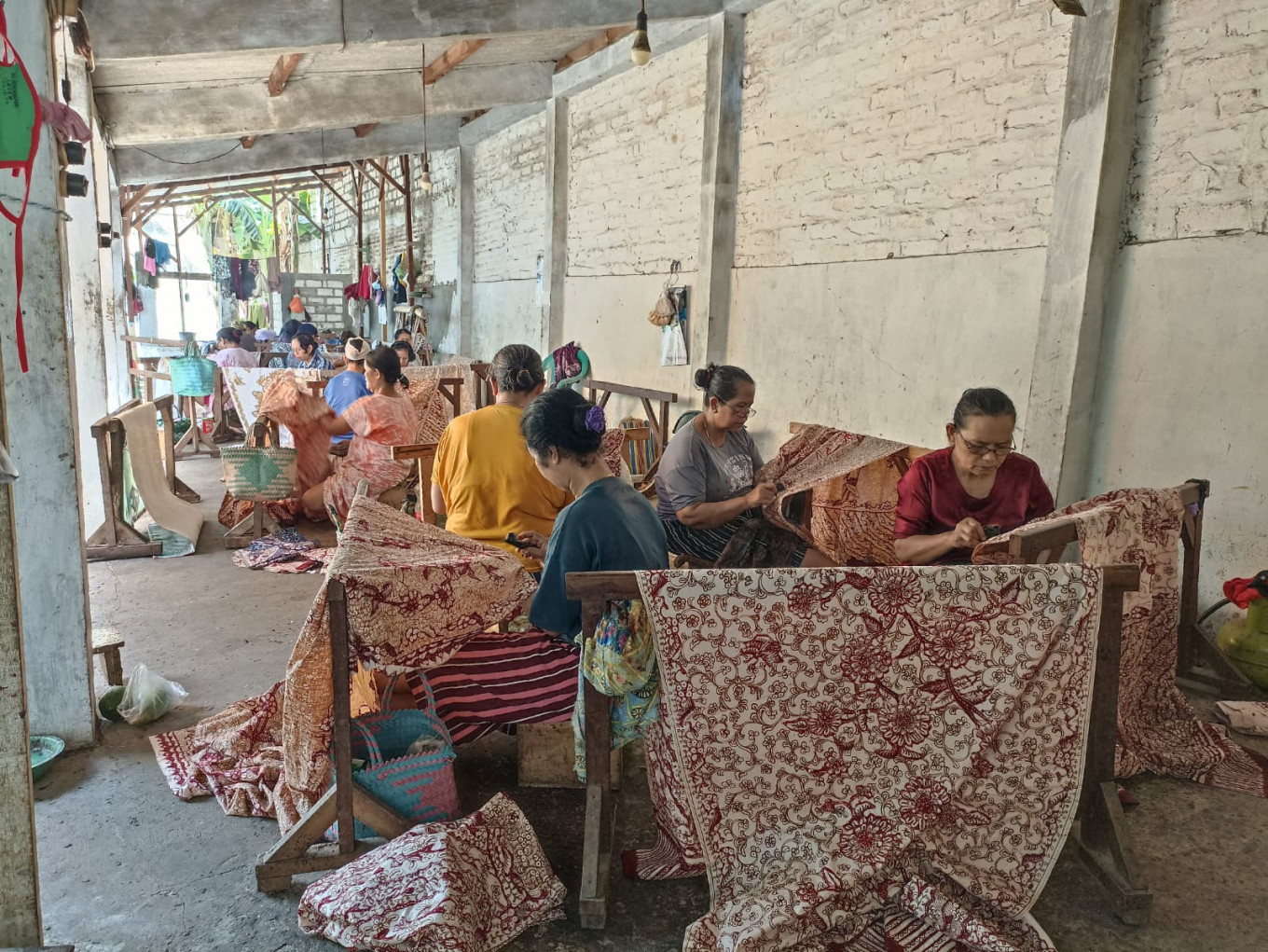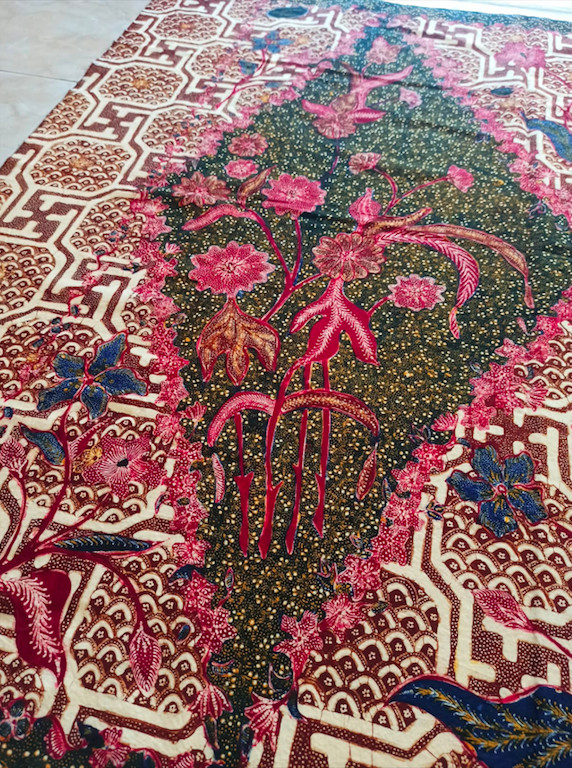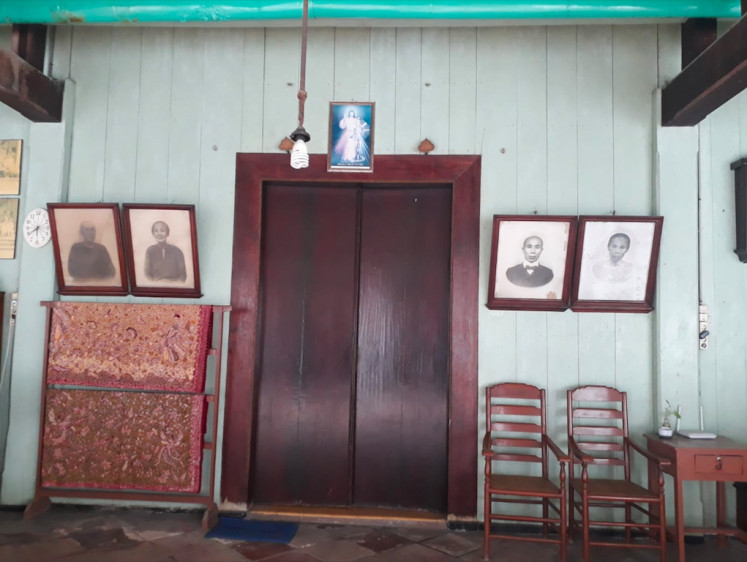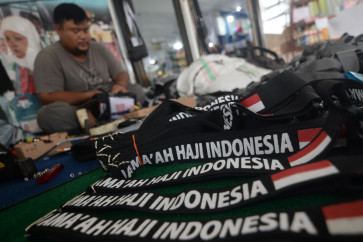Homecoming: Kins return to Lasem to preserve 'batik tiga negeri'
Change text size
Gift Premium Articles
to Anyone

Batik artisans in Lasem, Central Java, strive to continue their family businesses and keep traditional legacies alive.
While it is a large part of Indonesia’s cultural heritage, the art of making batik is slowly dissipating in certain parts of the country. Such is the case of batik tiga negeri (batik of three nations), which seems to have been forgotten by many local people in its place of origin in Lasem, Central Java.
Fortunately, some members of batik houses, who once left the city, have returned to continue their family’s legacy.
“My parents were getting old, and none of my siblings were willing to continue the batik house which my family has run for over six generations in Lasem,” Rudi Siswanto, 40, said.
“There were a lot of questions about what I would be able to do if I returned home to Lasem, aside from continuing my parents’ business.”
In 2013, Rudi switched careers from being an external auditor in Jakarta to managing his family’s business at Rumah Batik Kidang Mas located at Tawangsari, Central Java. He considers it a waste for their batik house to simply become a thing of the past.
Ekawatiningsih or Eka, another batik maker in the area, shared a similar concern.
“Who else will preserve this style of this batik?” 53-year-old Eka pondered.
Eka revived her family’s batik house, Batik Lumintu, back in 2016 after it had stopped operating for 50 years. Like Rudi, she focuses on preserving batik tiga negeri. Her creations are available at a showroom located in Karangturi, Central Java.
The patterns of batik tiga negeri are influenced by batik pedalaman (inland batik) and batik pesisiran (coastal batik). Usually, batik pedalaman presents a more earthy tone, like brown and dark yellow. It can be found around Yogyakarta areas.
Batik pesisiran, on the other hand, tends to have brighter colors, such as the shades of red or blue often seen in the coastal area of Java, such as Cirebon.
Rich with patterns, batik tiga negeri is also influenced by the acculturation of three cultures: Chinese (represented by red color), Javanese (represented by brown) and Dutch (represented by the indigo shades).
According to the journal Elements of Design in Batik Tiga Negeri, Lasem, written by Nanang Rizali and published in 2018 by Atlantis Press, the development of batik tiga negeri has been closely associated with the arrival of Chinese mariner Admiral Cheng Ho in Indonesia in 1413.
The art of batik tiga negeri was then passed down for generations.

Legacy
Rudi explained that in the earlier days, batik tiga negeri was mainly produced by Chinese-Indonesian families. His family has been producing the fabric since the 1860s. During this period, batik house owners often used their name as a brand. Rudi’s grandfather, Tjan Liong Khoen, for instance, used his name to mark his batik.
Rudi still follows that tradition. “It’s legacy,” he said.
Throughout his experience as both a batik business owner and artisan, Rudi has sent out his creations to other countries, including Singapore, Thailand and Germany and even worked with Indonesian designers such as Didiet Maulana.
Eka, meanwhile, feels a different kind of pride about returning home to Lasem.
“None of my emak [grandmother] and engkong’s [grandfather] grandchildren intend on going back to Lasem. In a way, it’s also like strengthening my connection with my ancestors,” said Eka, who works closely with her six batik artisans.
But Eka acknowledged that many batik houses in Pekalongan or Solo specializing in batik tiga negeri have decided to close their showroom.
“[Running the business] needs a lot of patience,” Eka continued, noting that one piece of batik tiga negeri can take three to six months of progress, from pattern making to coloring and finishing.
Challenges
Agni Malagina, a lecturer at Universitas Indonesia, who has researched batik tiga negeri, shared that previously, the Lasem pattern could easily be found in Central Java, such as in Solo and Pekalongan. But as the number of batik houses in the region is declining, the pattern can now only be found in Lasem.
“Lasem is the last ground and guardian for batik tiga negeri,” Agni concluded.
But even in Lasem, the number of batik houses has dropped significantly due to the COVID-19 pandemic.
“There were around 120 houses before, but it dropped to around 70 to 80 houses due to the pandemic,” said Yullia Ayu Aristiyanti, the vice-chairwoman of Yayasan Lasem Heritage.
Yullia added that the emergence of local batik factories in Central Java threatens batik houses, as factories can afford to pay employees a regional minimum wage—something that many batik houses are still struggling with.
“We have tried to discuss the artisan’s wage with the local authorities, but we haven’t received any follow up,” said Yullia.
Agni also thought that industrialization, with fabric printing as an alternative production of batik, is slowly killing the art.
“It’s printing that’s going to kill off the industry,” Agni exclaimed her concern.
Agni added that batik tiga negeri is not merely a piece of cloth; it also represents Indonesia as a multicultural country. Therefore, she believes it is important to preserve the pattern as an identity of a diversely cultured nation.

Regeneration
Rudi mentioned another challenge in preserving batik tiga negeri: Many of the younger generations of batik houses have decided to move to a bigger city. They prefer to start a career over continuing their family’s legacy.
When Rudi started his journey as a batik artist in 2014, he realized that younger generations were unaware of the patterns in batik.
“This situation encouraged me to introduce more kinds of batik to the younger audience,” he continued.
“We tried to introduce batik to children during their school holidays, especially to children whose mothers work as batik artisans. They can try and learn how to create patterns, coloring and even try nyanting [a process of drawing the batik pattern on a piece of linen cloth by hand using the hot-melted wax and bronze tool called canting].
“[Creating batik] needs a long process. I’ve introduced it to my family, my children and hopefully my grandchildren. Because this tradition won’t be gone as long as there are individuals who preserve it.”
Yullia agreed that mastering nyanting takes a lot of time. However, many younger generations are unwilling to learn and spend their time under the sun.
“We hope there are more younger artisans, but it’s such a challenge,” Yullia explained.
Despite those challenges, Eka still hopes she can keep her batik house doors open for a long period of time.
“I would say that I’ll try to preserve it until my last breath, if God will allow me,” said Eka.
“It will be a pleasure for me if I can witness the future generation enjoy batik tiga negeri,” she added.









